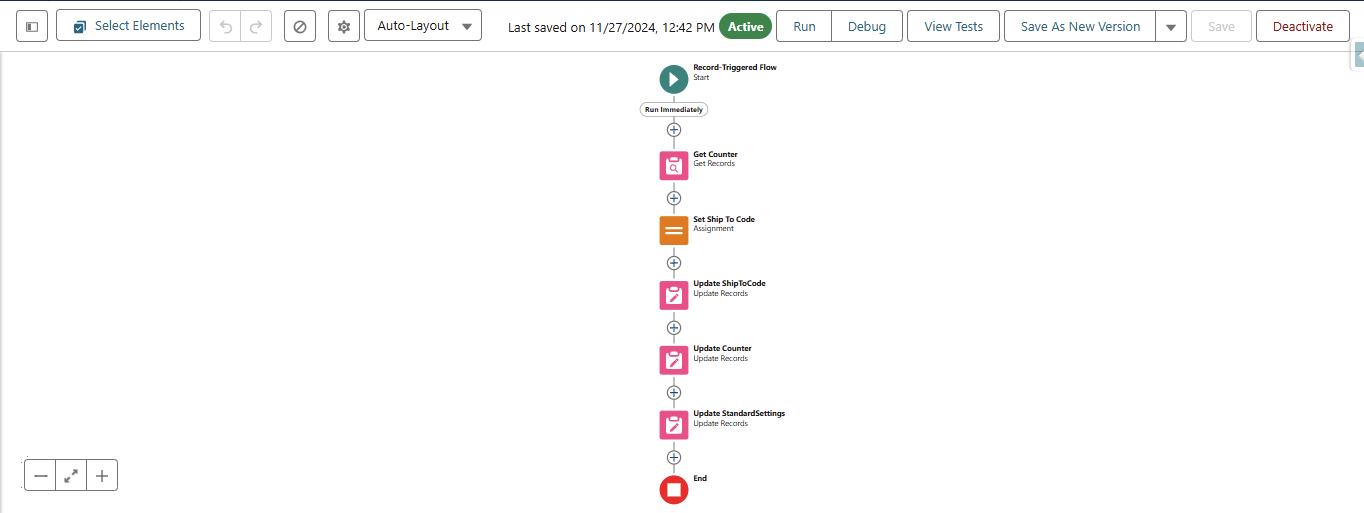If you’ve ever worked with Salesforce-managed packages, you know how challenging it can be to create unique identifiers for your records. Auto-numbering custom fields might seem like the perfect solution, but Salesforce’s native feature has limitations when applied to managed packages.
In this blog, we’ll explore the challenges of auto-numbering in Salesforce and introduce you to a streamlined solution using Record-Triggered Flows. Let’s dive in!
Understanding the Challenge
Salesforce’s native auto-numbering feature is great for automatically generating unique numeric or alphanumeric values for fields. However, there are notable limitations when working with managed packages:
- Incompatibility with Text Fields:
Auto-numbering doesn’t work directly on text fields, and many custom fields in managed packages are text fields by default. - Locked Field Types:
In managed packages, field types are locked after deployment. You cannot simply change a text field to a number field to enable auto-numbering. - Manual Workarounds Lead to Errors:
Businesses relying on manual assignment of unique codes often face data inconsistencies and errors, especially in industries like e-commerce or logistics, where large volumes of records are managed.
Example Scenario:
A company managing customer shipping addresses in Salesforce wants to generate unique shipping address codes like “SO1”, “SO2”, etc. Unfortunately, since the shipping address code is a text field within a managed package, Salesforce cannot natively generate these values automatically.
This limitation creates inefficiencies for businesses managing large volumes of records, such as those in e-commerce or logistics. Manually assigning unique codes leads to increased data entry errors and inconsistency.
The Solution: Leveraging Salesforce Record-Triggered Flows for Auto-Numbering
Thankfully, Salesforce Record-Triggered Flows offer a flexible and scalable way to overcome this limitation. By automating the generation of unique alphanumeric values for text fields, Flows can save time and reduce errors.
Here’s how you can implement this solution:
- Create a Custom Object to Track Auto-Number Values
First, you’ll need to create a custom object to store and manage the auto-number sequence. This object should include:
- Record Name Field: To identify the counter (e.g., “Ship Code Counter 1”).
- Last Used Number Field (Number Type): To track the most recent number in the sequence.
- Define Formula Fields for Code Generation
Use formulas to dynamically generate and increment the codes:
- Formula 1:
formula_NewPrettyCode:'S' & MID(TEXT({!Get_Counter.Last_Used_Number__c} + 1000001), 2, 6)
This formula creates the current code with a prefix (‘S’) and ensures a consistent 6-character format. - Formula 2:
futureShipCode:'S' & MID(TEXT({!Get_Counter.Last_Used_Number__c} + 1 + 1000001), 2, 6)
This formula calculates the next code for configuration updates. - Formula 3:
IncrementedCounterValue:{!Get_Counter.Last_Used_Number__c} + 1
This formula increments the counter value by 1 for each new record.
- Configure the Flow Logic
Flow Variables:
CounterToIncrement:Holds the counter record to be updated.Get Counter:Fetches the current counter record.
Flow Elements:
- Assignments
- Set the generated code (
Ship To Code) for the triggering record. Update the counter record with the incremented value.
- Triggering record’s
Ship To Code→formula_NewPrettyCode - Counter object’s
Last Used Number→IncrementedCounterValue
- Set the generated code (
- Get Records
- Fetch the current counter record using the
Get Counterelement.
- Fetch the current counter record using the
- Update Records
- Update Counter: Updates the custom object’s counter value.
- Record: CounterToIncrement
- Update Ship To Code: Updates the “Ship To Code” field on the Address record.
- Field: GUMU__Ship_To_Code__c
- Value: formula_NewPrettyCode
- Update StandardSettings: Updates the default starting address code value in the Standard Settings object.
- Update Counter: Updates the custom object’s counter value.

By following this approach, you can seamlessly implement auto-numbering for text fields in Salesforce-managed packages. The Flow ensures that each record gets a unique identifier while keeping your configuration synchronized.
Try this solution today and unlock a streamlined way to manage your records effortlessly. Let automation handle the heavy lifting so you can focus on what truly matters!
By following the above blog instructions, you will be able to learn “How to master Auto-Numbering in Salesforce Managed Packages: A Step-by-Step Guide to Simplify Your Workflow“. If you still have queries or any related problems, don’t hesitate to contact us at salesforce@greytrix.com. More details about our integration product are available on our website and Salesforce AppExchange.
We hope you will find this blog resourceful and helpful. However, if you still have concerns and need more help, please contact us at salesforce@greytrix.com.
About Us
Greytrix – a globally recognized and one of the oldest Sage Development Partner and a Salesforce Product development partner offers a wide variety of integration products and services to the end users as well as to the Partners and Sage PSG across the globe. We offer Consultation, Configuration, Training and support services in out-of-the-box functionality as well as customizations to incorporate custom business rules and functionalities that require apex code incorporation into the Salesforce platform.
Greytrix has some unique solutions for Cloud CRM such as Salesforce Sage integration for Sage X3, Sage 100 and Sage 300 (Sage Accpac). We also offer best-in-class Cloud CRM Salesforce customization and development services along with services such as Salesforce Data Migration, Integrated App development, Custom App development and Technical Support business partners and end users.
Salesforce Cloud CRM integration offered by Greytrix works with Lightning web components and supports standard opportunity workflow. Greytrix GUMU™ integration for Sage ERP – Salesforce is a 5-star rated app listed on Salesforce AppExchange.
The GUMU™ Cloud framework by Greytrix forms the backbone of cloud integrations that are managed in real-time for processing and execution of application programs at the click of a button.
For more information on our Salesforce products and services, contact us at salesforce@greytrix.com. We will be glad to assist you.
Related Posts
- How to rename the Field label in Salesforce for managed package.
- Set the Customer No field as “Not Required” in Salesforce while it is set to use the “Auto Number” functionality in Sage
- Salesforce Customization Empowers Your Business: Effectively Integrating ERP
- Streamline your workflow: Add Email Action to the Activity Tab with a custom Global Action

